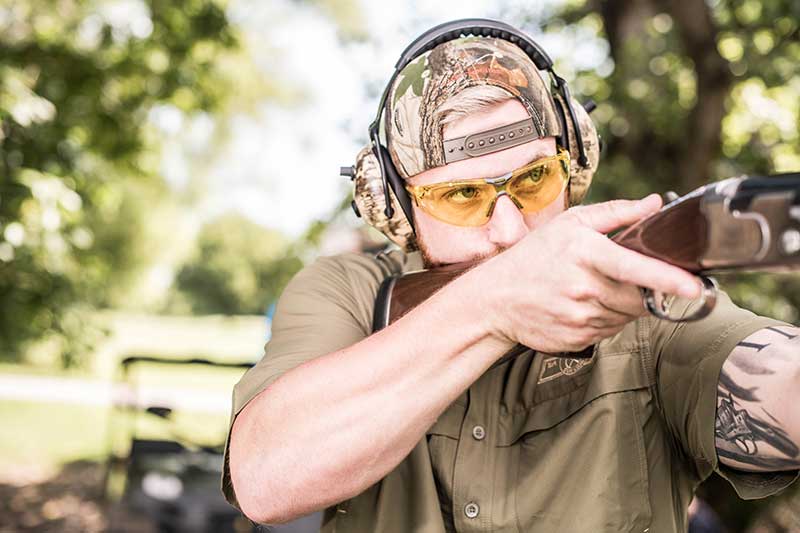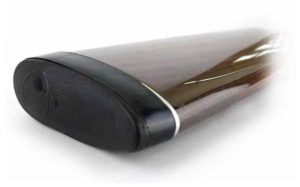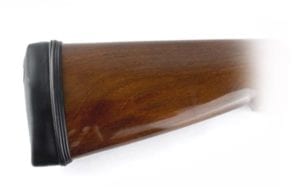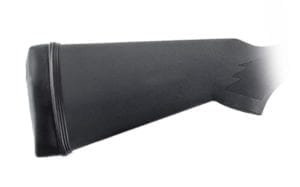
Clay target shooting is a popular sport that requires precision, accuracy, and the right equipment. The most important piece of equipment for clay target shooting is the shotgun; you need something that is accurate, comfortable, and absorbs recoil nicely. Let’s answer some questions about choosing the right shotgun for target shooting.
Which Gauge Is Best?
“Gauge” refers to the bore diameter of the shotgun, which determines the size of the shell that it can shoot. The most common gauges for clay target shooting are 12 gauge, 20 gauge, and 28 gauge.
The 12 gauge is the most popular choice for clay target shooting, as it offers the most power and versatility. It is also the most common gauge for competitive shooting events. However, some shooters may prefer a smaller gauge, such as the 20 gauge or 28 gauge, for a lighter recoil and improved handling. Some seasoned shooters might opt for a .410 gauge, which makes hitting the clay pigeon a little bit more difficult.
Should You Use a Longer or Shorter Barrel?
The length of the shotgun barrel is another important consideration. Longer barrels tend to be more accurate and offer a smoother swing, while shorter barrels are more maneuverable and easier to handle. The most common barrel lengths for clay target shooting are between 26 and 32 inches. As a rule of thumb, shorter barrels will be better for skeet shooting and you will enjoy better accuracy with clay shooting with a longer barrel. Add a source on this one.
Should You Use a Tighter Choke For Clay Shooting?
The choke is the constriction at the end of the shotgun barrel that affects the spread of the shot. A tighter choke will result in a narrower pattern, while a looser choke will result in a wider pattern. The right choke depends on the type of shooting you’ll be doing and the distance of the targets.
For trap shooting, which involves shooting at targets that are moving away from the shooter, a tighter choke is typically used. For skeet shooting, which involves shooting at targets that are crossing in front of the shooter, a looser choke may be preferred.
Make Sure Your Shotgun Has an Appropriate Length of Pull and a Good Recoil Pad
Make sure that your shotgun has an appropriate length of pull and a good recoil pad. Length of pull is essentially the measure of whether or not the gun’s size is a good fit for the shooter. If the length of pull is correct, the shooter’s support hand will be about one and a half inches away from their nose. Perfect length of pull depends upon the shooter and cannot be truly gauged unless they pick up a shotgun and actually inspect the gun for how it feels. Some shooting coaches and gun sellers will actually place cardboard spacers on the gun. Before the gun is sold, a shorter stock can be added and other changes can be made to the gun.
The stock is the part of the shotgun that the shooter holds. It’s important to choose a stock that fits the shooter well, as this can affect accuracy and comfort. A good stock should allow for a comfortable grip and proper alignment of the shooter’s eye with the shotgun’s sight.
A recoil pad from Falcon Strike® will also make your clay shooting experience more enjoyable, let you shoot with more accuracy, and let you spend more time on the shooting range.
Which Action is Best for Clay Shooting?
Shotguns come in several different types of actions, including break-action, pump-action, and semi-automatic. The action determines how the shotgun is loaded and fired. For clay target shooting, a break-action shotgun is a popular choice, as it offers a consistent and reliable performance with two-shots.
Is a Heavier or Lighter Shotgun Better?
The weight of the shotgun is also an important consideration. A heavier shotgun can help absorb recoil and provide a smoother swing, but it can also be more difficult to handle. A lighter shotgun is easier to handle, but may produce more recoil.
Finding the Right Shotgun for Clay Shooting
If you are looking for a shotgun that will make clay shooting exciting, go with a 12 gauge over/under gun. The heavier gauge will mean a heavier gun to help absorb recoil, enhance your accuracy, and let you get a second shot in.
Reduce Recoil, Increase Shooting Endurance and improve Accuracy with a FalconStrike Hydraulic Recoil.
Hydraulic Custom-Fit Recoil Pad
$179.99
Hydraulic Multi-Fit Recoil Pad for Medium Stocks
$199.99
Hydraulic Multi-Fit Recoil Pad for Large Stocks
$199.99
Hydraulic Multi-Fit Recoil Pad for Small Stocks
$199.99






